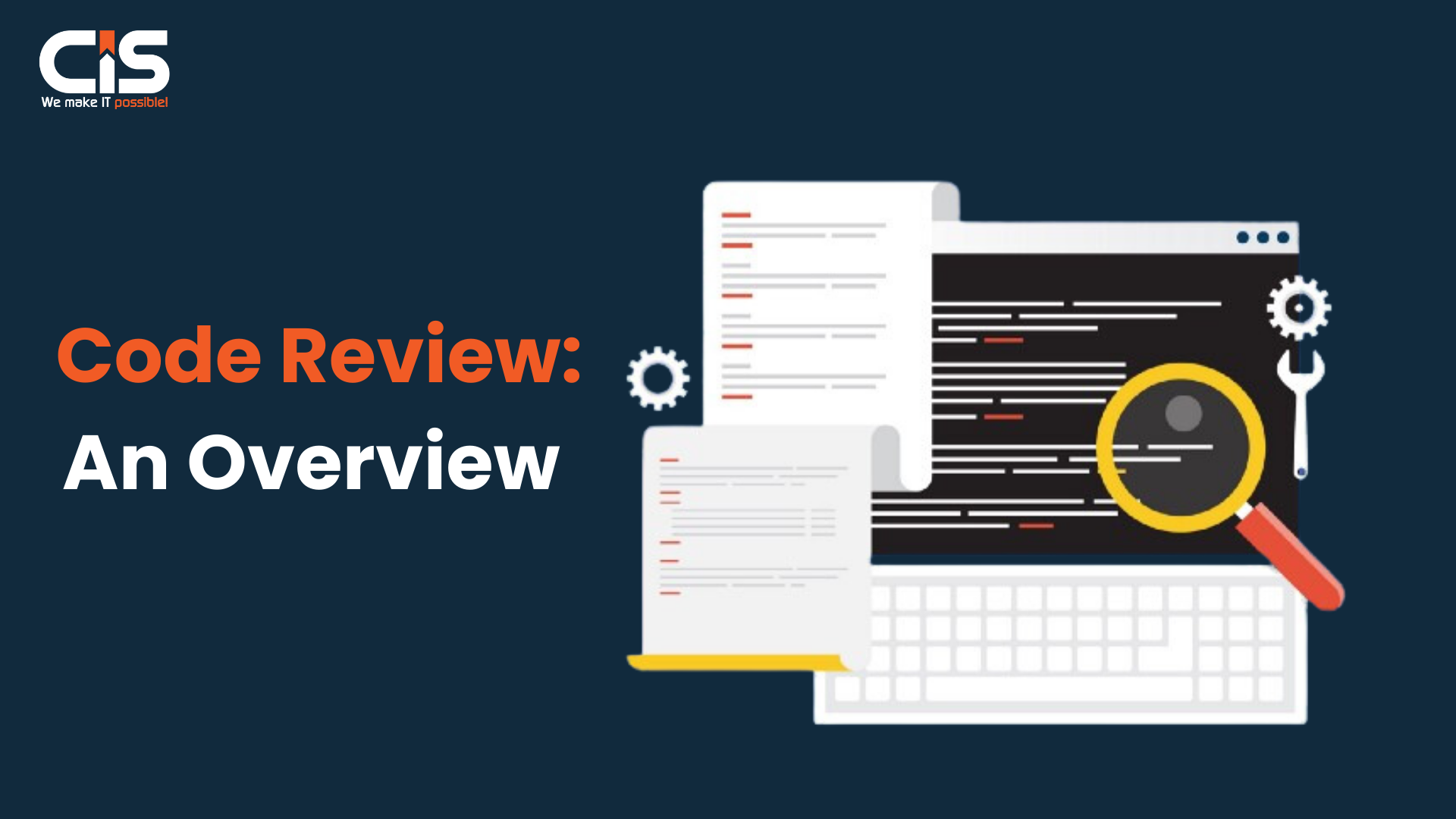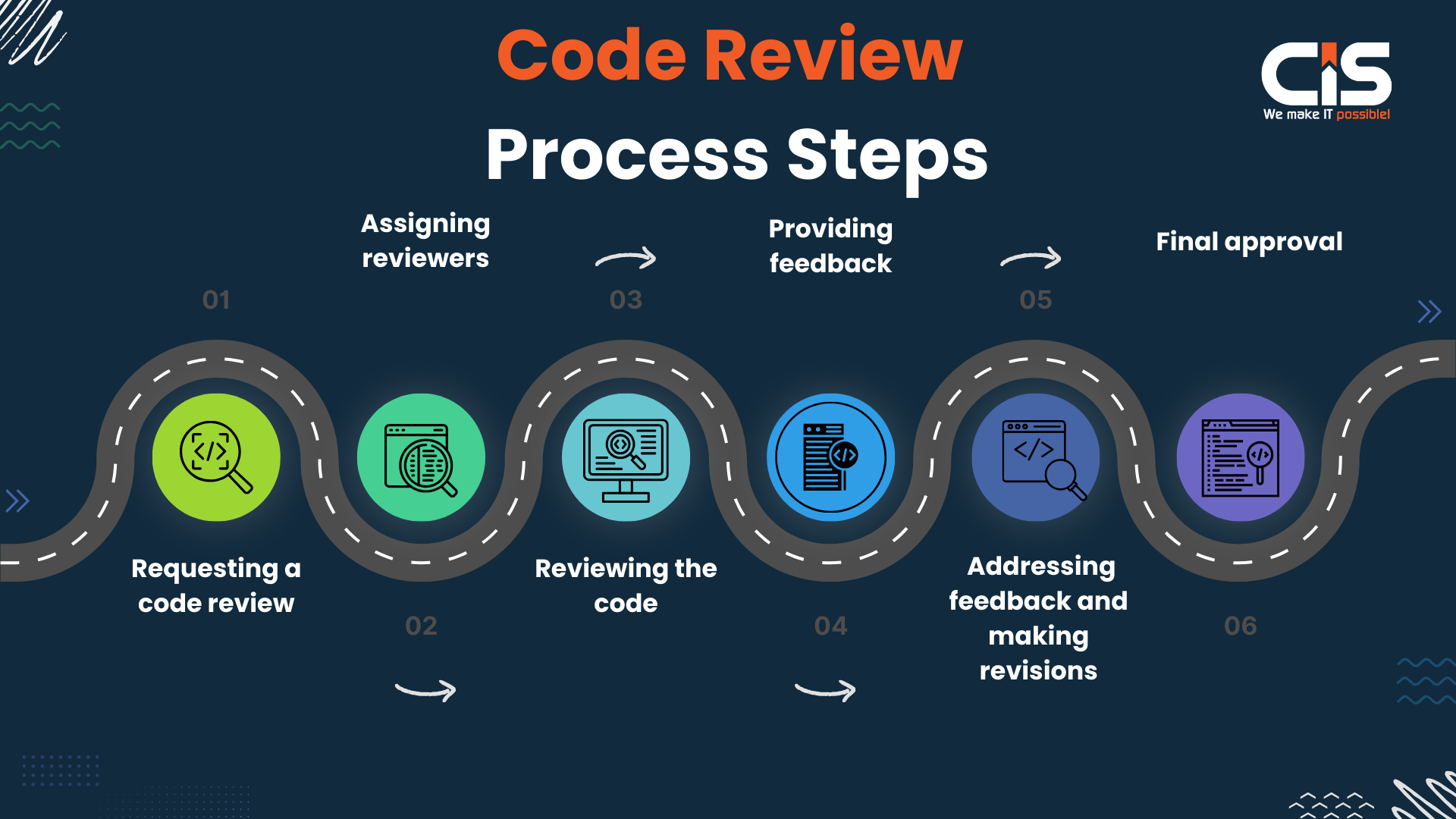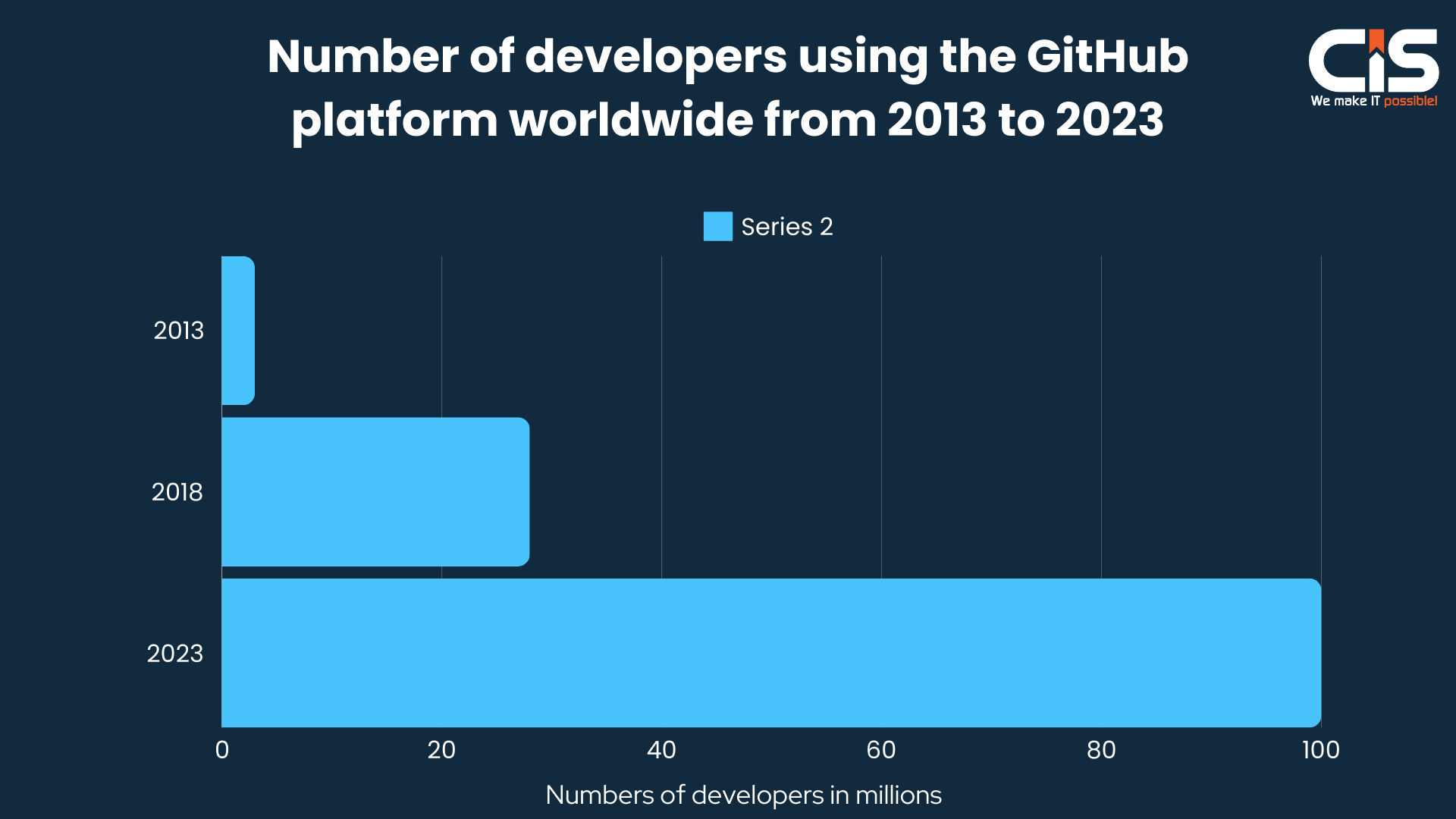Code review in software development is one of the aspects that best explains the measure of the quality of the particular software that is being developed. This can be described as a process of the coders' collaboration, which is directed to the evaluation of the defects of the existing piece of code as well as its enhancement. This article is going to explain the function of code review in the process of software development and the advantages received.
Importance of Code Review in Software Development
The purpose of code review in software development is probably best captured by the statement that it is a critical line of defense in terms of software quality in a software development project. Not only does it aid in catching code for bugs and logical mistakes before these turn into expensive problems, but it also fosters communication and other understanding among the team. With global revenues of more than 200 billion dollars, enterprise software holds the biggest market share of all software, according to Statista.
Let's Explore The Key Reasons Why Code Review Holds Such Significance
1. Finding and fixing bugs early
Code review in software development makes it possible to have a checked up view of the work by the developers sufficient enough to fix bugs or any other kind of issues early enough. While they do consume more review time, they play a role in reducing the aggravation of such problems farther from the software and later lead to some fundamental flaws.
2. Improving code quality:
Code review in software development also Self Check allows the developers to take a look at the entire lines of code base of the application. However, following the coding standards and standard practices when the actual coding is done, the readability of the code, maintainability of the code, and, at last, the efficiency of the source code increase, and hence, the software product is more robust or scalable.
3. Knowledge sharing:
This one assists in the teaming of people in the development team and also fosters the sharing of knowledge. This method would assist junior developers to learn from the seniors within the team, as the senior team members would also learn from the young minds of the junior developers. This is especially so since the learning that occurs in this kind of interaction enhances the skill capability of individuals in the team and cultivates a culture of learning within the setting of the team's assignments.
Benefits of Code Review
Advantages of Code Review apply and sustaining a sound code review practice has the following advantage that goes a long way in the achievement of the set objectives for software development:
1. Enhanced software quality:
Code review is quite useful in minimizing the number of defects that are related to coding errors and problems in the early stages of development, and hence, the quality of the software is improved. That, in turn, leads to increasing the level of satisfaction of customers and decreasing efforts for the maintenance of assets.
2. Increased team efficiency:
Code review is beneficial to the team since it encourages the development lifecycle of good working relations with the team members. This makes it possible for them to locate possible problems, talk it over and try to arrive at the most optimal code. This obviously goes a long way in increasing productivity as well as the feelings of code owners and pride in the job being done.
3. Faster development cycles:
Though code review can be viewed as the additional step that is needed in the development cycle, all the possible advantages are much more significant than the time spent. The purpose of code reviews in software development is to enhance efficiency in the delivery of codes because proper errors are detected and rectified before integrated solutions lead to poor quality codes, hence consuming much time to rectify.
4. Risk mitigation:
In another way, code review assists with minimizing the risks that are realized nowadays in software development. Effectiveness of code reviews allows the developers to review their peer review work and point out missed concerns that might relate to either security flaws, non-compliance with posted standards, or elementary inefficiencies. This kind of structured approach reduces the risks and issues of significant damage and also helps to prevent the exposure of user information.
Read More: 7 Tips for Software Developers: Maximize Code Review Impact with These Expert Strategies!
Code Review: An Overview

Code reviews are crucial in the software development process, with studies showing that teams that practice code reviews experience 50% fewer defects and can accelerate their development cycles by 25%. It involves the examination and evaluation of source code by team members to identify and correct coding mistakes, ultimately improving the software's overall quality.
Implementing code review practices in organizations leads to enhanced software quality, increased team efficiency, and faster development cycles. Additionally, it plays a vital role in risk mitigation by identifying potential security flaws or non-compliance with standards, reducing the risk of significant damage. Overall, code review is a valuable practice that contributes to improved software development outcomes.
Definition of Code Review
Code review is the process where developers collaborate to assess and enhance the quality of the software code. It plays a vital role in software development by identifying flaws and suggesting improvements to the existing code. Code review is crucial for ensuring reliable and high-quality software.
Purpose and Goals of Code Review
- Catch Defects Early: Identify and resolve issues before they reach production.
- Improve Code Quality: Enhance readability, efficiency, and performance.
- Facilitate Knowledge Sharing: Distribute expertise across the team.
- Ensure Best Practices: Confirm adherence to coding standards and guidelines.
- Encourage Collaboration: Foster teamwork and collective problem-solving.
Key Stakeholders Involved in the Code Review Process
-
Code Author:
- Writes and submits the code for review.
- Provides context and explanations for the changes made.
-
Reviewers:
- Examine the submitted code.
- Identify potential issues and suggest improvements.
-
Review Manager (optional):
- Oversees the review process.
- Ensures the process is followed and helps resolve conflicts.
-
Product Owner/Manager (when applicable):
- May provide input on features or requirements impacted by the code.
-
Quality Assurance (QA) Team (if involved):
- Tests the code to ensure it meets the required standards and doesn't introduce new issues.
Preparing for Code Review

Before diving into the software development code review process, it's important to lay the foundation for a successful manual review. This involves setting clear guidelines and standards, selecting the right maintainable code analysis tools for code review, and ensuring a collaborative and constructive environment.
1. Setting Clear Guidelines and Standards:
- Establish team-wide uniformity by establishing coding standards and norms.
- Document best practices and coding conventions that developers should follow.
- Define criteria for code review, including code quality, performance, security, and maintainability.
2. Selecting the right tools for code review:
- Evaluate and select forms of automated code review tools that align with your team's needs.
- Look for features like code highlighting, inline comments, version control integration, and automated code analysis.
- Popular code review tools include GitHub, Bitbucket, GitLab, and Phabricator.
3. Ensuring a Collaborative and Constructive Environment:
- Encourage open and effective communication and constructive feedback during code reviews.
- Emphasize a blame-free culture where the focus is on improving code quality, not pointing fingers.
- Promote teamwork and collaboration by involving multiple reviewers with diverse perspectives.
Code Review Process Steps

There exists a defined process of code review that is distinguished by several stages to facilitate the process and guarantee efficiency. Let's break down each step to better understand the process:
Step 1: Requesting a code review:
To begin with, code review will be called by the developer who made the specific section of code or who implemented a specific feature of the system. This could be done through the code review system or tool adopted by the team where through the system, a senior developer formally asks for a code review on specific code and attaches the relevant code files.
Step 2: Assigning reviewers:
As soon as a code review request has been made, it becomes the role of the team lead or the project manager to nominate one or more persons to conduct a review of the code. The reviewers are selected depending on the areas of specialization and knowledge of the programming language/frameworks implemented in the code.
This increases the confidence that the code is only being reviewed by people who have adequate knowledge of the said technologists. This enables them to pick on areas that they think may have problems or contain areas that could be improved to increase the overall quality of the code besides making sure that it is coded to the required standard.
Step 3: Reviewing the code:
In checking a code, there are certain elements in the code that the reviewers often look at, and that is coding style. This one applies to the structure and arrangement of the code. The reviewers will examine whether the code that has been written, factors that have been adhered to or not, or whether the code has been written in compliance with the recommended coding standards and practices. They will look for such issues as indentations, the style of naming variables and functions, and even the commenting style.
The next one of the major reasons to unify the coding style is that this approach will make it much easier to read through a tremendous amount of code as well as easier to maintain the application as well. Reviewers may comment or recommend some fixes so that the code must be according to the decided coding standards.
Through creating consistency in coding style, it helps the developers to do their work and comprehend the work of other developers and this enhances the flow of work among developers.
Step 4: Providing feedback:
Another aspect that defines the code review process is the possibility to give useful comments to the developer. When reviewing, the reviewers will read through the code in a very detailed manner, focusing on how readable the code is and whether or not the code follows coding standards.
They may zone in on areas of the code that they view as needing alteration or areas that they wish to recommend be improved. Reviews, therefore, assist the developer in the sense that they get to come to grips with the aspect of weakness in their code and how it could be fixed.
This feedback not only makes the current code better but also assists the developers in improving themselves for future competition. Finally, the objective of the feedback is to produce quality code as measured to the standards set by the project.
Step 5: Addressing feedback and making revisions:
Toward the end of the code review process, the developer will go through the comments given by the review and make modifications if some remarks are made. This could include editing the code, identifying the bugs and discrepancies, and making the necessary changes as suggested.
Also, the developer may need to offer some explanations or elaborations on the points that the reviewers may not have clearly understood regarding security aspects. They may also contact the reviewers for any further accreditation they may require with respect to the code to maintain the required standard.
This back-and-forth between receiving feedback and making changes is important in enhancing the quality of the code before it goes back to the main code base.
Step 6: Final approval:
The reviewers will always go back to the code to assess the changes that the developer has addressed on the feedback provided. During this re-evaluation process, the reviewers will be able to confirm that every problem that was noted in the code within the project has been fixed and that the code meets the required standards and specifications.
In the case the code is considered satisfactory, the code is approved, and the changes are incorporated into the main code base. This final review is important as it is a process of reviewing the code and ensuring it's ready to be merged into the large software development project
Best Practices for Effective Code Review
Industry data has shown that incorporating best practices in the software development code review process can greatly enhance the effectiveness and efficiency of software development projects. Consider the following important practices:
1. Multiple Reviewers:
- Code review is crucial in software development.
- Helps identify potential issues in the code.
- Guarantees the software's dependability and quality.
2. Specific Focus Areas:
- Code review
- Adherence to coding standard
3. Constructive Feedback:
- Multiple reviewers
- Specific focus areas
- Adherence to coding standards
- Constructive feedback
Common Code Review Pitfalls
Code review is an essential process in software development, but it's important to be aware of common issues that can hinder its effectiveness. By contextual understanding these pitfalls, experienced developers can avoid them and ensure a more productive and efficient software development code review process.
Here are some common software development code review pitfalls to watch out for:
1. Overemphasis on syntax and style:
- Consistent coding style is important, but don't focus too much on minor details.
- The primary goal of code review is identifying functional or performance issues.
- Prioritize functionality and performance over stylistic preferences.
2. Neglecting the human aspect:
- Assures software development's code dependability and quality
- Recognizes possible problems and opportunities for development
- Promotes collaboration and knowledge sharing among the development team.
3. Lack of documentation and comments:
- Identifies potential issues
- Improves software quality
- Enhances team collaboration
- Ensures adherence to coding standards
Code Review Tools
Code review tools play a significant role in enhancing the efficiency and effectiveness of the software development code review process. These tools automate the code review process, making it easier for developers to identify and resolve code issues.
Overview of Popular Code Review Tools:
Code review tools are essential in the software development process as they provide a systematic approach to reviewing and analyzing code reviewers. These static code analysis tools not only streamline the review process but also help improve code quality and ensure adherence to coding standards. Here is an overview of some popular code review tools:
1. GitHub:
The number of developers utilizing the GitHub platform has increased over the last ten years, from three million in 2013 to 100 million in 2023, according to Statista.

- Widely used for code review and collaboration.
- Provides a web-based interface for reviewing code changes.
- Offers features like inline commenting, code diff comparison, and discussions.
2. Bitbucket:
- Offers an integrated code review workflow.
- Allows reviewers to leave comments directly in the code.
- Provides features like pull requests, code branch comparison, and code diff visualization.
3. Crucible:
- Allows developers to conduct peer code reviews.
- Provides features like inline commenting, reviewer assignments, and code snippet sharing.
- Integrates with other development tools like Jira and Subversion.
Key Features to Consider When Selecting a Code Review Tool:
When selecting a code review tool for your development team, it's important to consider the following key features:
1. User-Friendly Interface:
- Seek a tool with an interface that is simple to use and intuitive.
- This ensures that developers can easily navigate and review code changes.
2. Customizable Workflows:
- Choose a tool that allows you to customize the review process to fit your team's specific needs.
- This ensures flexibility and efficiency in the software development code review process.
3. Integration with Development Tools:
- Integrated tool streamlines development with VCS and PM platforms.
- Enhances collaboration and workflow in development teams.
4. Automatic Static Code Analysis:
- Look for a tool that provides automated static code analysis.
- This helps identify potential bugs, coding errors, and vulnerabilities early in the development process.
5. Reporting and Analytics:
- Tool with comprehensive reporting and analytics features.
- Track code review progress, identify bottlenecks and improve quality.
Code Review in Agile Development
Code review is crucial in software development, with studies showing that it can improve code quality by up to 70%. It helps catch bugs and improves software maintainability. Additionally, it promotes collaboration and knowledge sharing among developers, resulting in better overall team performance.
Incorporating code review into the Agile methodologies:
1. Including Code Review as a Standard Practice:
- Enforce mandatory code review in Agile development.
- Establish clear guidelines and expectations for reviews.
2. Conducting Regular Review Sessions:
- Schedule regular code review sessions for timely feedback.
- Use asynchronous review tools for flexible feedback.
3. Encouraging Active Participation:
- Foster a collaborative, inclusive code review culture in code reviews.
- Encourage constructive feedback for improved code quality.
Benefits of code review in an Agile environment:
1. Catching Bugs and Issues Early:
- Code review improves software by finding potential issues.
- This minimizes technical debt and future review issues.
2. Promoting Collaboration and Knowledge Sharing:
- Code review promotes collaboration and knowledge sharing.
- Developers learn, share best practices, and understand the code base better.
3. Enhancing Code Quality:
- Code review ensures code quality and standards.
- Invaluable input for improving code quality.
4. Promoting Continuous Improvement:
- Code reviews promote continuous improvement in Agile teams.
- Regular reviews identify issues, improve processes, and boost efficiency.
5. Facilitating Knowledge Transfer and Onboarding:
- Code review aids knowledge transfer and onboarding.
- Reviews familiarize new devs with code base and conventions.
Code Review and Continuous Integration
More statistics and data regarding software development indicate that a high percentage of developers, 92%, feel that code review is crucial, as noted by SmartBear. Moreover, what experiences have shown is that code review is capable of identifying up to 60% of defects at the early stage, as indicated by IBM. I hope that these numbers will illustrate the significance and usefulness of the code review process in software development.
Integration of code review with Continuous Integration:
1. Improved Code Quality:
- It is used to detect errors before integration with testing.
- It is more readable, with less technical debt.
2. Faster Identification of Issues:
- Specifically, when compared to CI, code review is faster in terms of feedback.
- This is because getting issues early enables development cycle times to be compressed.
3. Ensuring Consistency and Adherence to Standards:
- Corporate investment CI code review helps to meet and check standards.
- Ensures code base readability and that there is only one way of doing things.
Strategies for seamless integration:
1. Automated Code Review:
- Submit your code for fast code review using an automated tool.
- Use the tools for the CI pipeline to have a comprehensive check.
2. Continuous Integration Hooks:
- Code review upon a change in the repo and auto notifications of code reviews.
- Enroll code reviews into the dev cycle.
3. Version Control Integration:
- Have Version Control work with the Code Review programs.
- Make it easy to refer to the reviews and the made changes to the code.
4. Real-time Feedback:
- Check back implementation of feedback loop between code review and CI.
- Review typical complaints to avoid their progression to severe ones.
Conclusion
More often, it is fundamental to know about code review for the development of software to be more productive. The following article gives a comprehensive explanation of code review with a focus on the significance of handling vulnerabilities and the quality of code. Another advantage of code reviews is maintaining consistency, increasing application reliability, and improving the cooperation between developer team members. In conclusion, code review provides confidence in the software and results in the creation of good products.
To optimize your software development and ensure top-notch code, it's essential to include the code review process. CISIN recognizes the importance of code reviews and provides comprehensive solutions for seamless integration and maximum benefits.
Our expertise and automated code review tools enable enhanced collaboration, improved code quality, and continuous improvement in Agile teams. Harness the power of efficient code reviews with CISIN and elevate your software development. Connect with us today for more information.


